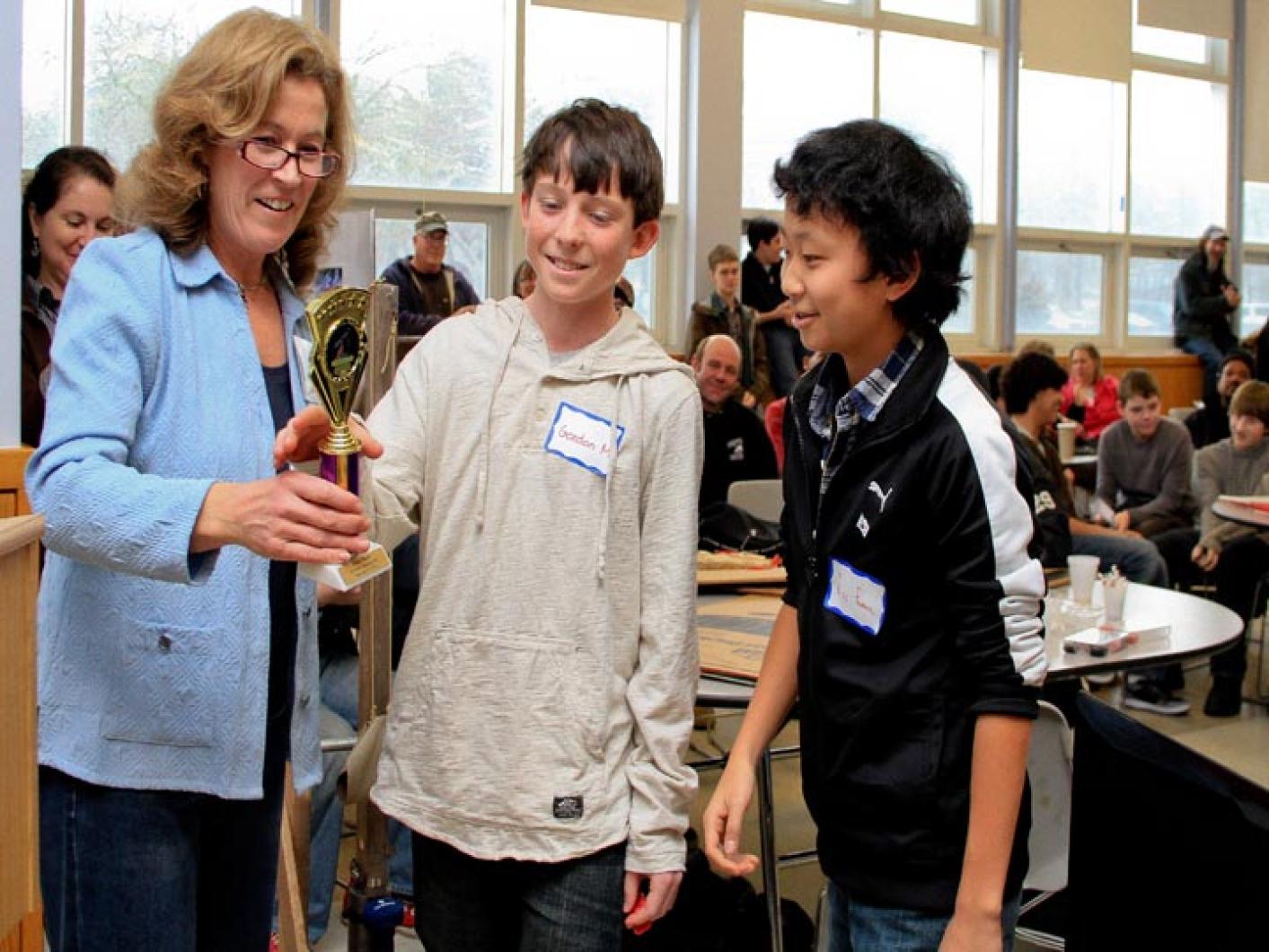The 13th annual Martha’s Vineyard Regional High School science fair took place Saturday morning, with freshmen Lee Faraca and Gordon Moore winning the grand prize for their project Cost Efficiency: Solar vs Wind Energy.
“We tried not to expect anything,” Gordon said afterward. “We didn’t think we were going to win.”
Lee and Gordon were also awarded first prize in the environmental science division and took home the David Brand award for “an outstanding project related to earth science.”
Junior Jack Wallace won second place overall for the development of a mobile application, entitled Homework Buddy. Jack was first in the engineering design, product-based division.
Junior Charlotte Hall took third overall and first in the engineering design, process-based division for her project, Ceramic Glazes: Chemistry and Art Combined at High Fire.
One hundred and fifty projects, a school record, were entered in the fair.
A list of winners by category appears below:
In the biology category, Jack Yuen took first place for his project Do You Really Catch More Flies with Honey?; Willow Wunsch, second for the Growth of Mold under Different Conditions; Eleah Caseau and Amanda Fielding, third for the Effects of Gender Identity on Short-Term Memory.
In the Chemistry category, Colin Cameron and Elie Jordi took first place for their project Food Scraps to Biofuel; Lucy Hackney and Zana Van Rooyen, second for Glass vs Plexiglass; Anne Ollen, third for Which Antacid Works Best?
In the Physics category, Brian Donegan and Aaron Teves took first place for Variations of Strength in Paper; Luke McCracken and Kevin Montambault, second for Gaussian Accelerator; Eli Hanschka and Russell Shapiro, third for the Effect of Parachute Shape on Its Drop Velocity.
In the Environmental Science category, Lee Faraca and Gordon Moore placed first for their project Cost Efficiency: Solar vs Wind Energy; Josie Iadicicco and Sabrina Reppert, second for Garbage Separation; Mike Mussell and Tim Roberts, third for Dissolved Oxygen in Water vs Temperature and Salinity.
In the Earth Science category, Erin Hickey and Jesse Hermann took home first place for the Effect of Soil pH on Plant Growth; Sophie Ulyatt, second for Effect of Vitamin D on Plant Growth, and Emily Kleinhenz and Bailey Moreis, third for The Drought Doesn’t Fall Far from the Seed.
In the Engineering Design, Product Based category, Jack Wallace took first place for his project, Homework Buddy; Nathaniel Horwitz, second for Waterfall of Renewable Energy; Dana Jacobs, third for The Cardboard Chair.
In the Engineering Design, Process Based category, Charlotte Hall placed first for Ceramic Glazes: Chemistry and Art Combined at High Fire; Alayna Hutchinson, second for Portable Water Purification; Lucy Norris, third for Friendly Fuel of the Future; Isabel Smith, Creating the Most Effective Catch Basin.
In the Wind Turbine Competition, Kyle Joba-Woodruff and Jack O’Malley placed first; Antone Lima and April Hargy, second, and Maya Harcourt and Michael Schroeder, third.
Special awards were doled out to the following students: Andrew Ruimerman received the Cape Light Compact Award for The Effect of Solar Panel Angle on Energy Output; Lee Faraca and Gordon Moore received the David Brand Award for Cost Efficiency: Solar vs Wind Energy; Isabel Smith received the Friends of Sengekontacket Award and the Martha’s Vineyard Surfcasters Association Award for Creating the Most Effective Catch Basin; Alayna Hutchinson received the Island Grown Initiative Award for Portable Water Purification; Gaylen Mayhew received the Marine and Paleobiological Research Institute Award and the Lagoon Pond Association Award for Natural Water Filtration, and Charlotte Lowell-Bettencourt received the Sustainability Award for Gutter Energy.







Comments (1)
Comments
Comment policy »